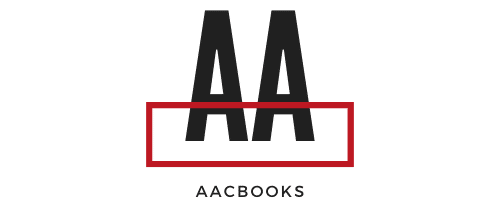Postpartum recovery is a crucial phase that every new mother goes through after childbirth. Proper care and the right exercises can greatly enhance the recovery process. In this context, High-Intensity Interval Training (HIIT), a form of cardiovascular exercise, is widely discussed. The question is, what impact does it have on postpartum recovery? Let’s delve into this topic.
What is High-Intensity Interval Training (HIIT)?
Before we discuss the influence of HIIT on postpartum recovery, we need to understand what it is. High-Intensity Interval Training, or HIIT, refers to a training methodology that involves short bursts of high-intensity exercise alternated with brief periods of low-intensity recovery or rest. This type of workout is known for its ability to burn calories and improve cardiovascular fitness in a shorter span of time compared to traditional steady-state cardio workouts.
Additional reading : How Does the Implementation of Blue Zones Principles in Urban Planning Promote Longevity and Health?
The principle behind HIIT is simple – it’s all about pushing your body to its limits for brief periods, then allowing it to recover before going again. The high-intensity periods are typically at or close to anaerobic exercise, while the recovery periods involve activity of lower intensity.
The Impact of HIIT on Postpartum Recovery
Now, let’s look at the potential effects of HIIT on postpartum recovery. Postpartum recovery is a complex process that involves physical healing, hormonal balance restoration, and weight loss, among other things. The body of a new mother needs time to heal and regain strength.
In parallel : Is There a Correlation Between Language Proficiency and Cognitive Decline in Multilingual Seniors?
After pregnancy, women often grapple with weight-related issues. This is where HIIT can be beneficial. Several studies have demonstrated that HIIT workouts can burn more calories than traditional workouts, even after the workout is over. This phenomenon is known as the ‘afterburn effect’ or Excess Post-Exercise Oxygen Consumption (EPOC).
On the other hand, the high intensity of these workouts may not be suitable for all new mothers, especially immediately after childbirth. It’s critical to get clearance from a healthcare provider before starting any new fitness routine after childbirth.
Benefits of HIIT in Postpartum Recovery
Despite the need for caution, there are several potential benefits of HIIT that can aid postpartum recovery.
Firstly, as mentioned earlier, HIIT can expedite weight loss. This is particularly beneficial for women who are keen to lose the extra pounds gained during pregnancy. By integrating HIIT into their fitness regimen, they can achieve their weight loss goals faster.
Secondly, HIIT is time-efficient. Time is a luxury that new mothers often don’t have. HIIT workouts are usually short – typically, they can be completed in 20-30 minutes. This makes them an ideal choice for busy moms.
Lastly, HIIT can boost mood and energy levels. Studies have shown that high-intensity workouts can help increase the production of endorphins, chemicals in the brain that act as natural mood lifters. This can be beneficial in combating postpartum depression and anxiety.
Precautions to Take When Doing HIIT Postpartum
While HIIT can be beneficial in postpartum recovery, there are some precautions to keep in mind.
First and foremost, it’s imperative to consult with a healthcare provider before starting any high-intensity workout postpartum. They can guide you on when it’s safe to start and what exercises to avoid.
Secondly, listen to your body. If you feel any discomfort or pain during or after the workout, it’s a sign that you need to slow down. Remember, recovery is a gradual process and pushing your body too hard can do more harm than good.
Finally, consider seeking guidance from a fitness professional. They can help you understand how to perform the exercises correctly and safely.
How To Incorporate HIIT into Your Postpartum Recovery
Incorporating HIIT into your postpartum recovery can be as straightforward or as complex as you make it. The key is to start slowly and gradually increase the intensity of your workouts.
You can start with a simple routine, like 30 seconds of high-intensity exercise followed by 30 seconds of rest, and repeat this cycle for 10-20 minutes. As your fitness level improves, you can increase the duration of the high-intensity periods and decrease the recovery periods.
Remember, the goal is not to push yourself to the point of exhaustion, but rather to gradually increase your fitness level while supporting your postpartum recovery. Above all, be patient with yourself. Postpartum recovery is a journey, not a race.
The Role of Nutrition in Postpartum Recovery and HIIT
While HIIT provides numerous benefits, it’s crucial not to neglect the nutritional aspect of postpartum recovery. Nutrition plays a vital role in supporting the body during this recovery phase, providing the energy required for HIIT and other physical activities.
Following childbirth, a woman’s body requires extra nutrients to heal and recover. This requirement is even more significant for breastfeeding mothers, as they need additional nutrients to produce milk. A balanced diet rich in proteins, carbohydrates, healthy fats, vitamins, and minerals can help meet these nutritional requirements.
Incorporating HIIT into your recovery routine increases your energy expenditure, which means you’ll need to consume more calories to fuel your workouts. A well-planned diet, complementing your HIIT workouts, can help provide these extra calories in a healthy way.
It’s also important to stay hydrated, as both breastfeeding and HIIT can lead to increased fluid loss. Drinking adequate amounts of water can help maintain energy levels and prevent dehydration, which is crucial for your overall health and wellbeing during postpartum recovery.
It’s worth noting that every woman’s body responds differently to childbirth and exercise. Therefore, it’s advisable to seek guidance from a dietitian or nutritionist who can provide personalized dietary advice based on your specific needs and goals.
The Importance of Rest and Relaxation in Postpartum Recovery and HIIT
While exercise and nutrition are important aspects of postpartum recovery, so is rest. When incorporating HIIT into a postpartum recovery plan, it’s crucial to balance it with adequate rest and relaxation.
Rest is particularly important when doing HIIT, as the high-intensity nature of these workouts can put a lot of stress on the body. Adequate rest allows the body to repair and strengthen itself between workouts. This is especially crucial during postpartum recovery, as the body is also healing from childbirth.
Aside from physical rest, mental relaxation is also key to a successful postpartum recovery. Childbirth and adjusting to life with a new baby can be stressful. Incorporating relaxation techniques, such as deep breathing exercises, meditation, or even simply taking a few minutes each day to relax and enjoy some quiet time, can help reduce stress and promote overall wellbeing.
Remember, postpartum recovery is not a race. It’s a journey that requires patience, self-care, and balance. Pushing too hard, too soon can do more harm than good. It’s crucial to listen to your body and give it the rest and relaxation it needs.
Conclusion
In sum, High-Intensity Interval Training (HIIT) can be a valuable tool in postpartum recovery. It presents an efficient way for new mothers to lose excess weight gained during pregnancy, improve cardiovascular health, and boost mood and energy levels. However, it’s crucial to approach HIIT with caution and to balance it with proper nutrition and adequate rest.
Remember to listen to your body and consult with healthcare providers before starting any new fitness routine postpartum. And most importantly, remember that postpartum recovery is a gradual process – it’s important to be patient with yourself and your body as you navigate this journey.











